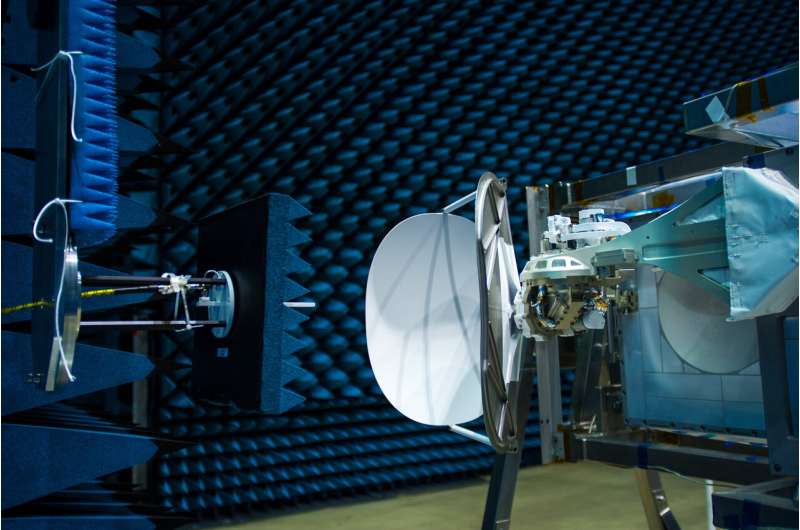Image: Space antenna

Unlike traditional satellite dishes used to pick up television signals, this antenna has to work in space itself. Rather than being clamped to an apartment balcony, it will be installed on the exterior of Europe's Columbus laboratory, becoming part of the International Space Station.
What it does have in common is the direction it will face. Like almost all other satellite dishes, this antenna will point skyward to send and receive data. Although the International Space Station orbits Earth at 400 km altitude, the European Data Relay System communication satellites that it will link up with are orbiting our planet at more than 35 000 km higher still.
Called ColKa for Columbus Ka-band antenna, the system promises speeds of up to 50 mbit/s. This will allow astronauts and researchers to benefit from a direct link with Europe at home broadband speeds – delivering a whole family's worth of high data volume downlink and video streaming for science and communications.
But, before astronauts and scientists can enjoy such direct connection speeds, the hardware must be tested at ESA's technical heart in The Netherlands. Pictured here in the Hertz test chamber, ColKa's radio signals are being recorded. The blue spikes isolate the room from electromagnetic interference, recreating the radio frequencies of space.
This first step on its road to space enabled the recording of its initial working performance. From Hertz, the antenna was moved an ESTEC shaker facility where it endured the vibrations of a rocket launch. Suitably shaken, ColKa returned to the Hertz chamber for follow-up testing, ensuring it still receives and emits radio waves as designed.
There is more to space than radio waves however, so ColKa's journey through the ESTEC Test Centre is far from over. in few days the hardware will be placed in a thermal vacuum chamber for a whole week. This will ensure it still works in vacuum as it is subjected to the same repeated temperature changes it will experience when bolted outside the Space Station.
Once it passes all the tests and is launched into space, ColKa will require a spacewalk to be installed on the Columbus laboratory. Astronauts will mount it on the Columbus MDPS (meteoroids protection panel) and connect wires between to the unit before it can be switched on. ColKa's high-speed radio link will transmit scientific data to researchers all over Europe and the world who are eager to get the latest results from their experiments. The European Data Relay System will transmit the data to a ground station at Harwell, UK, near ESA's European Centre for Space Applications and Telecommunications, and from there the data will be transferred to the Columbus Control Centre and user centres across Europe.
The know-how gained from designing, building and running ColKa could potentially be used in exploring farther from Earth in the Gateway around the Moon. ESA aims to supply the ESPRIT module for communications, scientific experiments, and refuelling for the international lunar outpost and will propose this at the agency's next Ministerial at Council level called Space19+.
Developed with Artes funding for some units, this fridge-sized telecom system was designed and built by UK and Italian companies as prime contractors, using products from Norway, Belgium, France, Canada and Germany.
Provided by European Space Agency





















